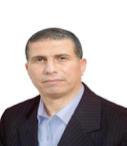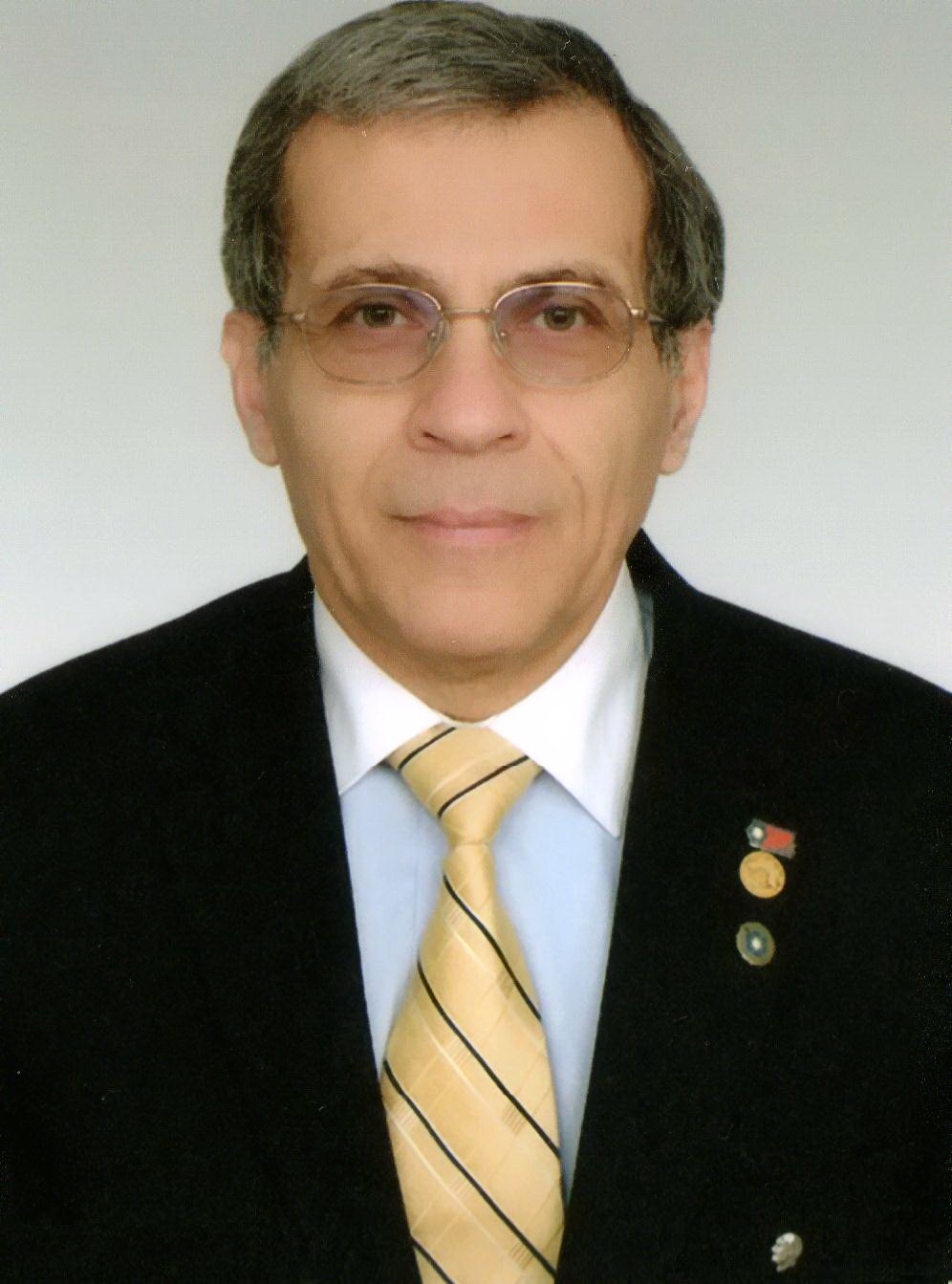



Dr Kostadin Fikiin leads the Refrigeration Science and Technology Research Group at the Technical University of Sofia (part of European University of Technology - EUt+), investigates heat transfer processes, product quality and energy efficiency throughout the cold chain, and develops innovative equipment and logistics for sustainable food refrigeration. He is a Member of the Executive Committee of International Institute of Refrigeration (IIR), diverse IIR Commissions and Working Parties, European Technology Platforms ‘Food for Life’ (2006-2013) and ‘Renewable Heating and Cooling’, EFFoST and BULSHRAE. Likewise, he is or was in charge of a number of further professional functions, e.g.: Academician of the International Academy of Refrigeration, Chairman of EHEDG Working Group ‘Food Refrigeration Equipment’, Vice-President of IIR Commission D1 'Refrigerated Storage' (2004-2011), Editorial Board Member of Journal of Food Engineering, Associate Editor (2008-2016) and Academic Editor of Journal of Food Processing and Preservation, Guest Editor of Trends in Food Science and Technology and LWT, National UNDP Consultant, Flair-Flow National Stakeholders’ Network Leader, EUROFREEZE Coordinator, EU FP6/FP7 National Contact Point, CoolingEU Academic Mirror Group Member, Mettcover Global Technology Advisor, etc. Dr Fikiin published various articles and book chapters, spoke at many scientific events worldwide, and served as a key organiser and scientific committees’ member of a multitude of IIR, CEFood, EFFoST, ICEF, Eurotherm, Thermam and EU conferences around the globe. His professional achievements have been recognised, cited in the scientific literature and distinguished with Bulgarian and international prizes. He also worked on short-term assignments for the European Commission and the United Nations Development Programme.
Title: Cold chain innovations as a global sustainability enabler
Abstract: As a major source of direct and indirect greenhouse emissions, the refrigeration industry is paramount for the world’s sustainability. Whereas the carbon footprint of refrigeration (4.2 Gt CO2 eq.) amounts today to over 8% of the global emissions (thus exceeding four times the aviation emissions), the sector is also responsible for 20% of the worldwide electricity consumption. Specifically, the carbon footprint of the food cold chains around the globe is approx. 1.3 Gt CO2 eq. per annum. Among the various technological means to mitigate emissions and combat climate change, this presentation features three selected sustainability enhancing innovations, namely: (i) a novel chilling and freezing method, named ‘hydrofluidisation’, which brings together the advantages of both air fluidisation and immersion food freezing techniques by using unfreezable liquids or two-phase ice slurries as refrigerating media and fluidising agents; (ii) a demand response strategy for ‘passive’ storage of renewable energy in refrigerated warehouses to serve as ‘virtual batteries’ for power peak ‘shaving’, and electrical grid balancing and decarbonising (taking also into account the effect of temperature fluctuations and freeze-thaw cycles on the end product quality); and (iii) a pioneering technology for the integration and cryogenic storage of renewable energy at refrigerated warehouses, enabling low-carbon industrial refrigeration and power supply.


ZIDANI Mosbah currently is a Professor in the Faculty of Technology at Batna 2 University. He is the chief of a research team in the LGEM Laboratory at the University of Biskra. He is particularly interested in the development and characterization of innovative metallic materials. He was chairman of the scientific committee of the metallurgy department, member of the Scientific Council of the Faculty of Science and Technology and chairman of several doctoral training at the University from Biskra and currently he is a Scientific advisor at the MESRS and and President of the regional commission (HU) at the Cru-Est. The research axes currently developed are mainly focused on the experimental study of the microstructures, deformation and recrystallization texture of metal alloys by SEM, EBSD, RX and neutron diffraction Pr. Zidani is the author of over fifty (50) international scientific papers (indexed by: Thomson Reuters /Scopus -Elsevier). He has over 170 participation in national and international conferences in the last ten years, which he has presented dozens national and international plenary conferences as an Invited Speaker. Pr. Zidani has chaired and organized several national and international scientific events and also member of the scientific committee in more than fifty (50) national and international scientific events. He is the main Editor of the special issue of journals (DF,DDF and SSP indexed by: Scopus -Elsevier) of the scientific.net house in Switzerland and also Editorial Board member and Evaluation expert (Reviewer) in several high level journals (Steel research international, JERA, JNanoR, Journal of Molecular Liquids, JMES…. indexed by: Web of Science and Scopus-Elsevier). Prof. ZIDANI has directed and discussed fourteen (14) doctoral theses and more than thirty five (35) master’s degree and final projects for engineering students. Supervision of Master START-UP projects (according to decree 1275) supported in July and September 2023, in collaboration with an industrial partner from a vital national socio-economic sector and in cooperation with research teams from laboratories of Algerian universities Prof. ZIDANI has directed several national research projects (CNEPRU, PNR, PRFU, etc.) with industrial partners, particularly public, in this case: ENICAB-Biskra and TREFISOUD-El Eulma (Sétif), with several national research centers and laboratories: Advanced Technology Development Center (CDTA), Baba Hassan-Algiers (Algeria ), Materials Science and Engineering Laboratory (LSGM),USTHB-Algiers ( Algeria), Center for Scientific and Technical Research in Physico-chemical Analysis (CRAPC), Tipaza (Algeria) and with the following international laboratories and institutions: Laboratory Synthesis, Properties and Modeling of Materials (SP2M), Léon Brillouin Laboratory (LLB)/CEA in France, Bioceramics and Theoretical Atomic laboratory, Department of Physics, Faculty of Science, Firat University-Elazig, Turkey and Functional Nanocomposite/Hybrid, Low Dimentional Functional Material Group,Research Center for Advanced Material, National Research and Innovation Agency (BRIN) Indonesia
Title: Characterization of the textural, mechanical and electrical properties of industrially drawn aluminum and copper alloy wires
Abstract: The ENICAB Company in Biskra uses the cold drawing process on several types of wire rods of different materials and grades. Our study was carried out on the as-received wires of aluminum alloy type AGS (AA6101) and copper type DUCAB most used by the ENICAB Company in the manufacture of electrical power transmission cables. The aim of this work is to understand the evolution of the deformation texture and the energy stored in the grains during the cold drawing of these wires, as well as the combined influence of the deformation rate and the annealing temperature on the kinetics of recrystallization and the evolution of structural, mechanical and electrical properties. For this study, several experimental techniques of measurement and characterization have enabled us to carry out this work. These are: optical microscopy (MO), scanning electron microscopy (SEM), electron backscattered diffraction (EBSD), X-ray diffraction, neutron diffraction, Vickers microhardness and chemical analysis by (EDAX), Tensile tests and electrical resistivity measurements, some of which have made it possible to correlate the microstructure with the mechanical and electrical properties.

Dr. Kilkis received his Ph.D. degree in Mechanical Engineering with high honors from the Middle East Technical University. He also graduated from the von Karman Institute for Fluid Dynamics in Belgium with honors in 1972. Dr. Kilkis has been working on heat transfer, unified heat transfer theory, high-performance buildings, quantum mechanics, fluid dynamics, heat pumps, energy strategies, hydrogen energy with renewable energy systems, hydrogen cities, 5th-generation district energy systems, net-zero exergy cities, district energy systems, aerodynamics, exergy analysis, combined heat and power, tri-generation, green airports, sustainable aviation, integrated solar PV systems, and energy simulations. He is the co-author of a most recent book on Cogeneration with Renewables. In total, he has published over 600 papers in various journals and proceedings on a wide range of topics. Since 1972, he has been the principal investigator of several industrial projects, including a NATO Science for Stability project on a de-centralized, co-generating 1.5 MW fluidized-bed power plant. He had been a contractor to DOE, Morgantown Energy Technology Center in West Virginia twice on fluidized bed heat transfer modeling. Between 1998 and 1999, he served as the project principal for snow-melting systems at Air Force bases, heat tracing of fighter jet aircraft during freezing periods, and snow/ice melting of helicopter pads on Navy Vessels. Currently, he is a professor at OSTIM Technical University, vice chair, and WP1 Leader in ETIP Renewable Heating and Cooling in the European Union, Brussels.
Title: Decarbonization and Heat Pumps Toward The Paris Agreement
Abstract: This keynote reviews the document titled '2050 Vision for 100% Renewable Heating and Cooling in Europe,' specifically addressing the statement that a heat pump saves approximately 50% of primary energy when it replaces a fossil fuel boiler. The latest model employing the Second Law of thermodynamics is applied to investigate the accuracy of this statement across various combinations of renewable energy sources and systems, including solar photovoltaic, solar photovoltaic-thermal, medium-enthalpy geothermal energy systems, and wind turbines, driving a heat pump, in comparison to a natural gas-fired thermal power plant, to assess their total carbon dioxide emission responsibilities. The carbon dioxide emissions of each of these electrical energy supply cases were attributed to the heat pump. In contrast, the emission savings of the heat pump, achieved by replacing a boiler or a solar flat plate collector that generates only thermal energy, were considered for various exergy-based mixes of electrical energy sources and systems. Results show that a heat pump's actual fossil fuel savings may vary between 7% and 56%. The large variation suggests that a range of options should be provided in terms of the Second Law of thermodynamics rather than a single fuel-saving rate, encompassing all possible electric power supply alternatives, energy sources, and systems. It is also concluded that the latest model can be replicated to rate and analyze cooling scenarios with 100% renewable energy.